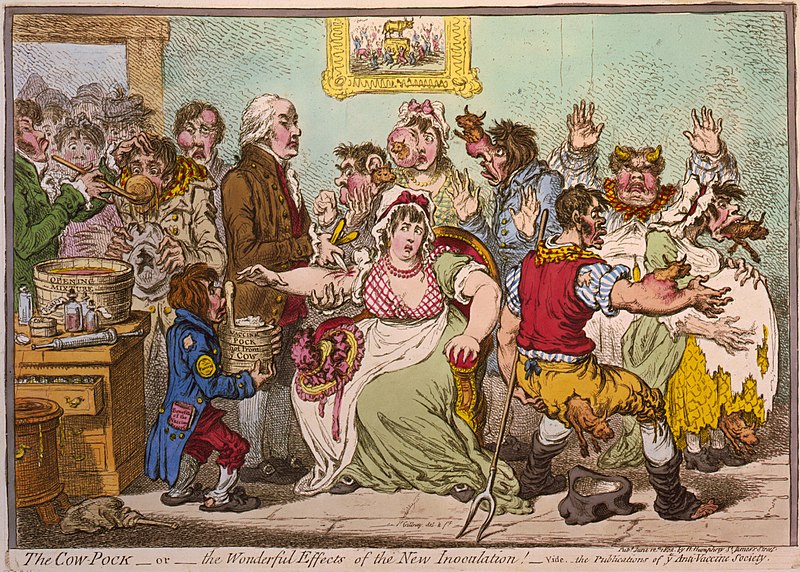As we have studied today, medical improvements strongly contributed to the reduction of mortality and population growth in the 18th century. There were several discoveries which led to an extraordinary advance in healthcare. For example, Anton van Leeuwenhoek, a Dutch scientist, improved the microscope and discovered red blood cells, bacteria, and protozoa. The Italian doctor Giovanni B Margagni founded pathologic anatomy and the French biologist Marie François Xavier Bichat developed histology. But the most transcendent improvement was made by Edward Jenner, a British doctor who improved inoculation and created the first vaccine to prevent smallpox. The story of this invention is very curious:
The principle of vaccine is inoculating a small dose of the virus you want to prevent, so that your organism is able to create the antobodies to combat the virus by himself. Jenner discovered that milkmaids didn´t get the smallpox and thought that this might be related with the pus inside the blisters milkmaids had from cowpox (a disease cows suffer, very similar to smallpox). He extracted the pus from one of these blisters and inoculated an 8-year-old boy with this liquid and the boy became immune to smallpox. That´s why the word "vaccine" comes from "vaccinus,-a, -um" (bovine in English) and "Vacca,-ae" ("cow" in English). The cow that contributed to the invention of vaccine was called Blossom.
At the beginning people were not convinced of the effectiveness of vaccines and many thought that if they were inoculated with cowpox they would become cows. Here you have a 1802 caricature which shows doctor Jenner vaccinating patients who were afraid of the "secondary effects" of vaccination:

There was also a Spanish contribution to the history of medicine: the Balmis and Salvany smallpox expedition:

In 1803 Doctors Francisco Xavier Balmis and José Salvany proposed to vaccinate all the children in the American colonies. Their expedition was financed by King Charles IV, because his daughter, infant María Luisa, had suffered from smallpox. The problem was how to transport the vaccine to the Indies, because they didn´t have means of preserving it. Balmis had the idea of taking 22 orphans and inoculating the vaccine to some of them and passing it from ones to others. This way, the virus could arrive in America and they could start the vaccination campaign. This expedition was very important. They took the vaccine to the Canary Islands, Colombia, Perú, Ecuador, México, China and the Philippines and they inoculated thousands of children in two years. This expedition is considered to be the first international healthcare expedition in history. Edward Jenner himself was admired by this important achievement.

Map of the smallpox expedition
If you want to learn more about other medical improvements, click on the following link:
No comments:
Post a Comment